
Crew Dragon 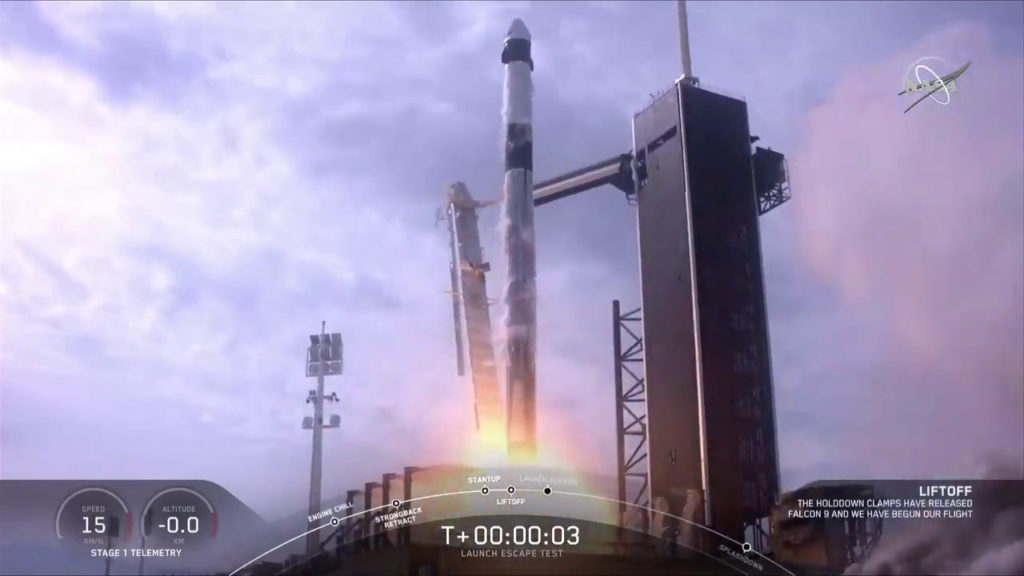
Launch 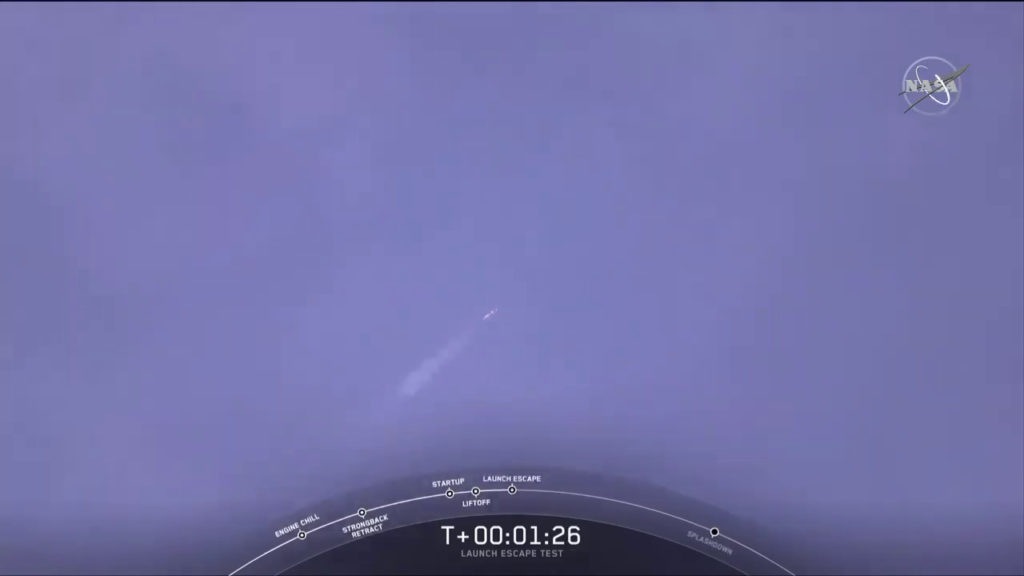
Separation 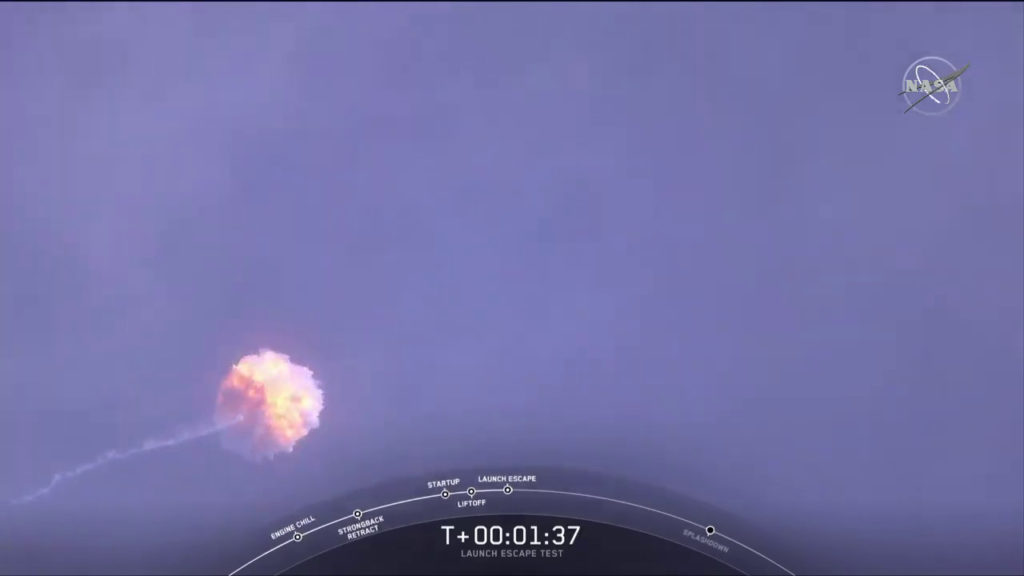
Falcon 9 Fireball (NASA TV)
It’s almost all-clear for Bob Behnken and Doug Hurley to fly to the International Space Station in a SpaceX Crew Dragon capsule. On 19 Jan 2020, SpaceX and NASA successfully completed a flight test of the Crew Dragon Launch Escape System.
As the uncrewed DM-1 mission proved the Crew Dragon is capable of docking at and returning from the ISS, there are few remaining items on the checklist. SpaceX Chief Engineer Elon Musk said that final delivery and inspection of the flight hardware can be expected in mid-February to early March. NASA and SpaceX will also collaborate on two further tests of the ‘Mark 3’ parachute system, using all four chutes. The largest question, which has the potential to delay the flight far into the spring, is that NASA will also now decide whether personnel levels on the ISS are a sufficient concern that the DM-2 mission should be extended from its previously planned 8-day visit, to a multi-month operational flight. If so, the astronauts will require additional training for further flight tasks, including spacewalks.
To reach this point, SpaceX has overcome a number of technical challenges, including changes to the Crew Dragon landing system, as previous ‘Mark 2’ parachutes had inconsistent results. SuperDraco’s fuel lines had to be redesigned after a catastrophic failure in April 2019, when a plumbing fault allowed nitrogen tetroxide oxidizer to explode on contact with a chemically incompatible valve.
At T+84 seconds, the nine engines of the rocket cut off, then the Crew Dragon capsule visibly separated from the Falcon 9 around T+86 seconds. Without a fairing on top, internal structure of Falcon 9 became directly exposed to supersonic airflow, overstressing the walls and propellant tanks, which were filled with liquid oxygen and kerosene, just like they would be in a real launch. By T+97 seconds, the veteran first stage and dummy second stage dissolved in midair, replaced by an orange-white fireball. As its remains fell from the sky, recovery ships were on standby, ready to pick up any debris for further analysis.
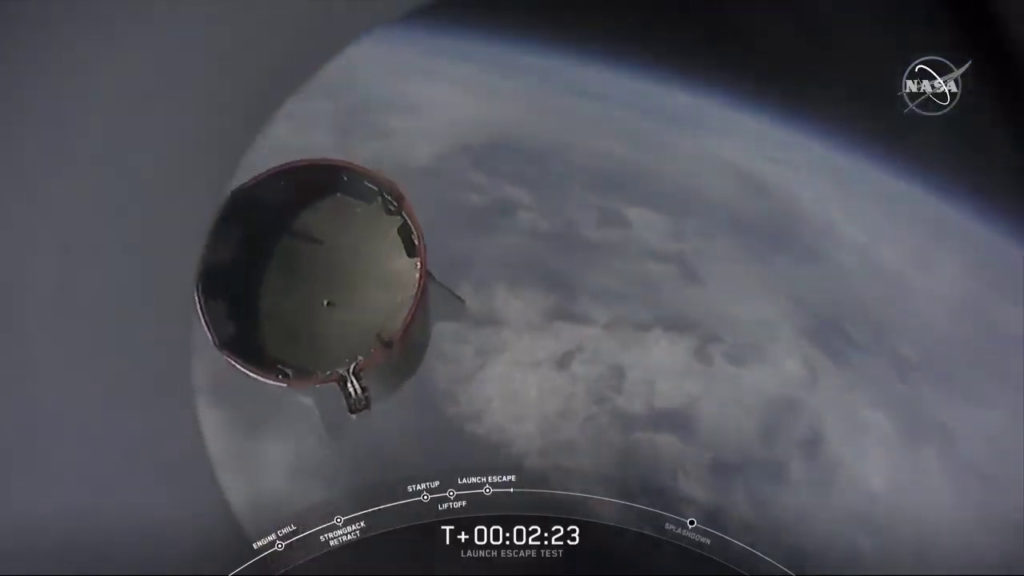
Trunk jettison 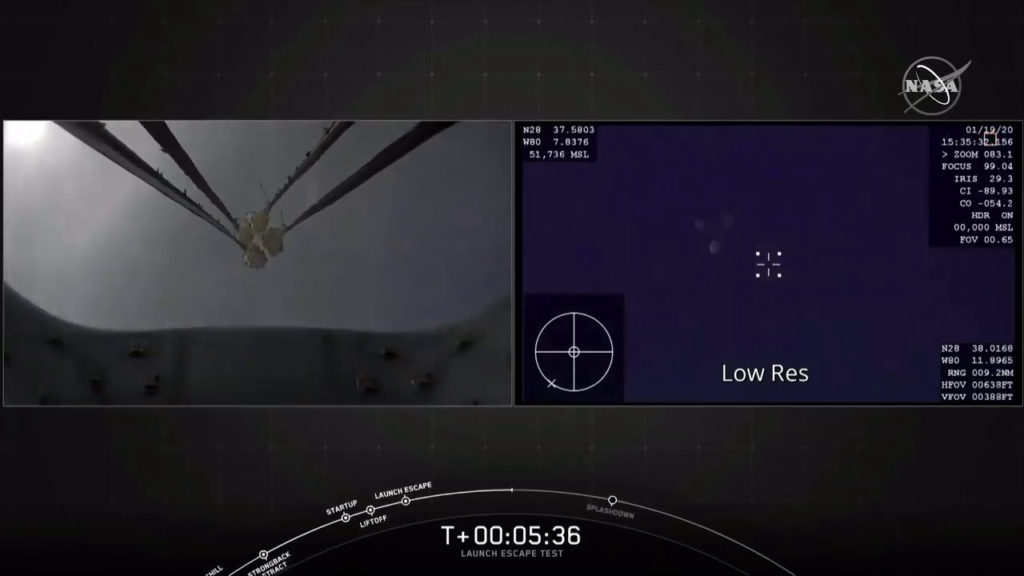
Mains 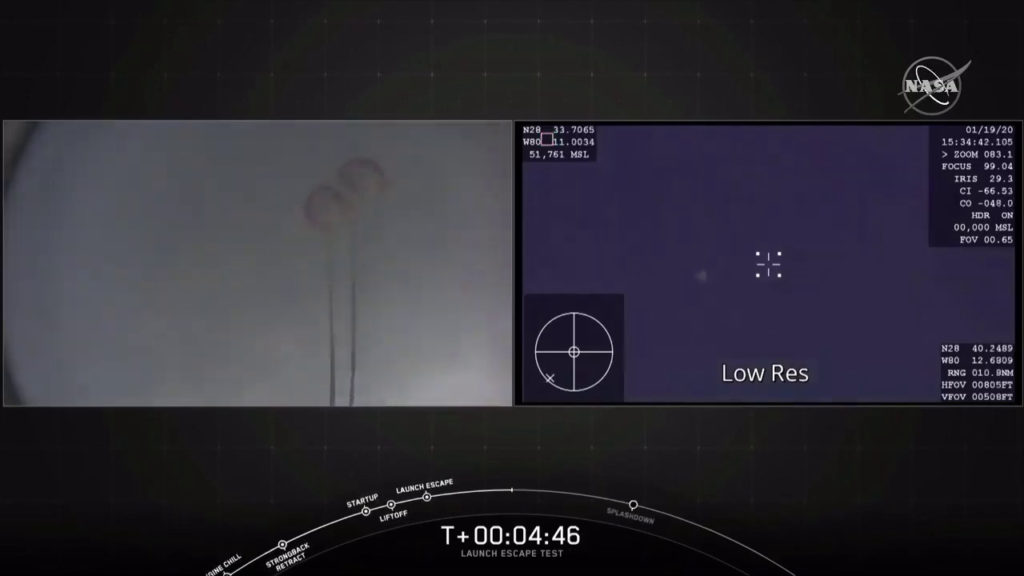
Drogues 
Splashdown (NASA TV)
All this, however, was a dramatic sideshow for the main event – the Launch Escape System test. After separation, the Crew Dragon capsule successfully completed a burn of its eight SuperDraco engines, and had few problems dumping its ‘trunk’ service module on the way as it coasted to an apogee of 40 km. After reaching peak altitude, Crew Dragon kept itself upright, ready to deploy its two drogues, followed at lower altitude by its four ‘Mark 3’ main parachutes. Crew Dragon landed safely in the Atlantic Ocean, and managed it all about half a minute ahead of schedule.
Capsule recovery was expected to take a couple hours, with SpaceX, NASA, and US Air Force participating. As Bob Behnken and Doug Hurley were supervising recovery operations, astronauts Mike Hopkins and Vic Glover, who will fly on the second SpaceX Crew Dragon mission, were on hand to answer questions at the post-launch conference, alongside Jim Bridenstein and Kathy Lueders from NASA, and Elon Musk from SpaceX. Though the results will still need to be checked, it was mainly smiles and effusive thanks, after the “picture perfect” test.


One thought on “Successful Crew Dragon safety test, US crewed spaceflight to return Spring 2020”
Comments are closed.